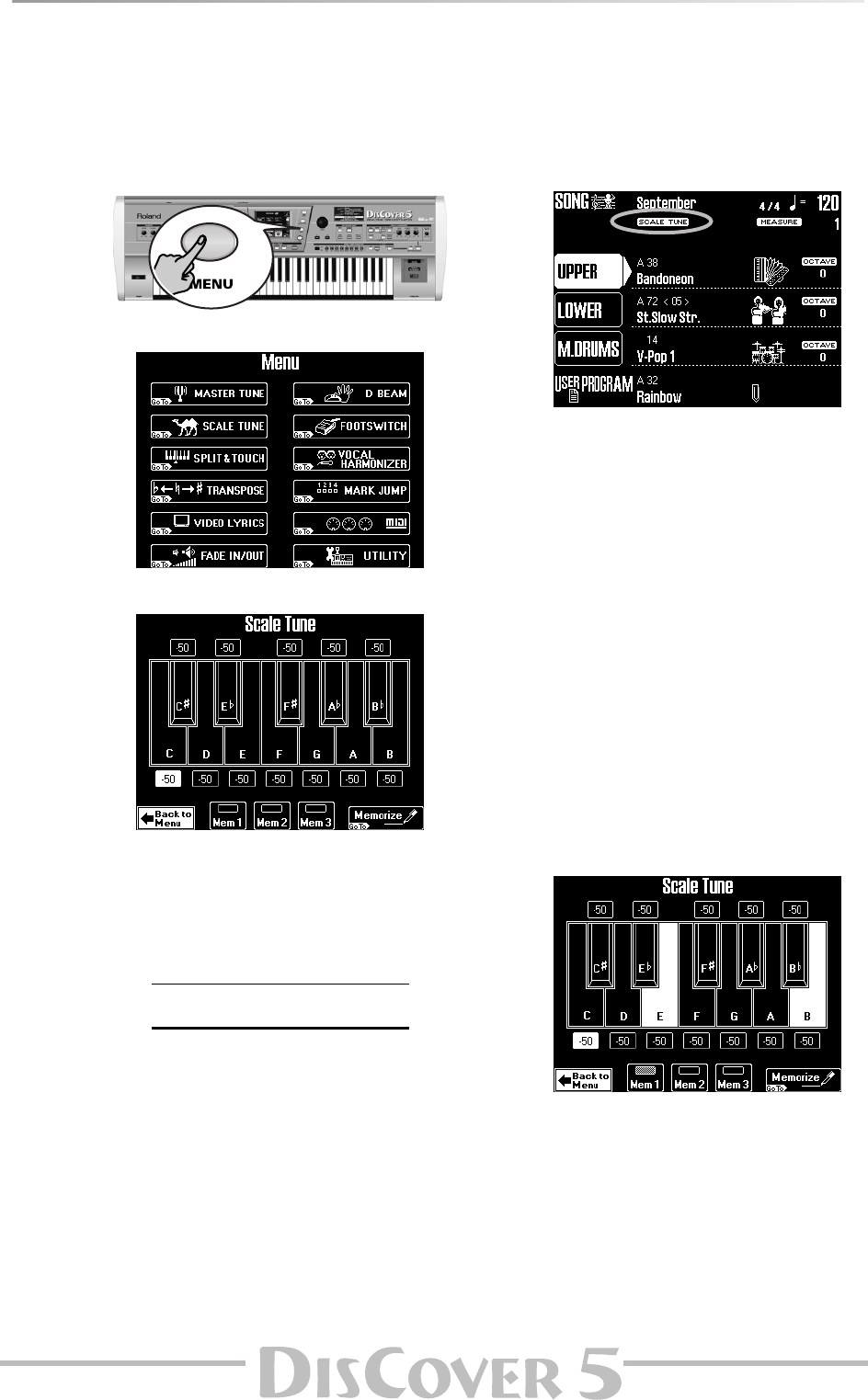
Owner’s Manual
45
Scale Tuning
Another useful function is called Scale Tuning. It allows you to use oriental, Asian, and other scales in much the
same way as on an oriental keyboard (EM-55 OR, etc.).
The DisCover 5 contains three memories where you
can store your favorite tunings. These are three glo-
bal memories that apply to all User Programs.
(1) Press the [MENU] button.
The display changes to:
(2) Press the [SCALE≈TUNE] field.
(3) Press a [Mem≈1]~[Mem≈3] field to select a
Scale Tuning memory.
This will change the pitch of the following
notes (“–50” means that the note in question is
tuned a quarter tone down):
The pitch of the other notes is left unchanged.
The keys corresponding to the notes whose
pitch is changed are displayed in white for easy
identification.
You will notice that every note can be selected
only once. That is because the value you specify
applies to all notes of the same name. If you
change the tuning of the “C”, that value will be
added to or subtracted from all Cs (C1, C2, C3,
etc.). The on-screen keys are used as “on/off
switches”.
If you now returned to the main page, you
would notice that the DisCover 5 alerts you to
the fact that the Scale Tuning function has
been switched on:
But let us not return to the main page just yet.
Changing the pitch of other notes
Changing the pitch of other notes than the
ones already highlighted is a matter of pressing
the desired on-screen keys in question. And
defeating the pitch change of a key displayed in
white is as easy as pressing that key again (it
will once again be displayed in white).
Press all white on-screen keys (or the [Mem]
field that is displayed in white) to switch the
Scale Tuning function off again.
●
Customizing the pitch changes
At first, pressing an on-screen key, so that it is
displayed in white, means that its pitch is low-
ered by 50 cents (1/4 tone, or “–50”). There may
be situations where you actually want to raise
the pitch of a note, or select a different tuning:
(4) Press the on-screen key of the note/key
whose pitch you want to change.
That field is displayed in white. As stated earlier,
the pitch of all notes is at first set to “–50” (one
quarter tone down). You can however, select
any value between “–64” (slightly lower than a
quarter tone down) and “63” (slightly higher
than a quarter tone up).
(5) Use the [VALUE] dial to set the desired pitch.
If you selected a [Mem] field, an asterisk (*) is
displayed to indicate that the stored settings
have changed.
Mem 1 Mem 2 Mem 3
E (–50)
B (–50)
E (–50)
A (–50)
C# (–50)
F# (–50)


















